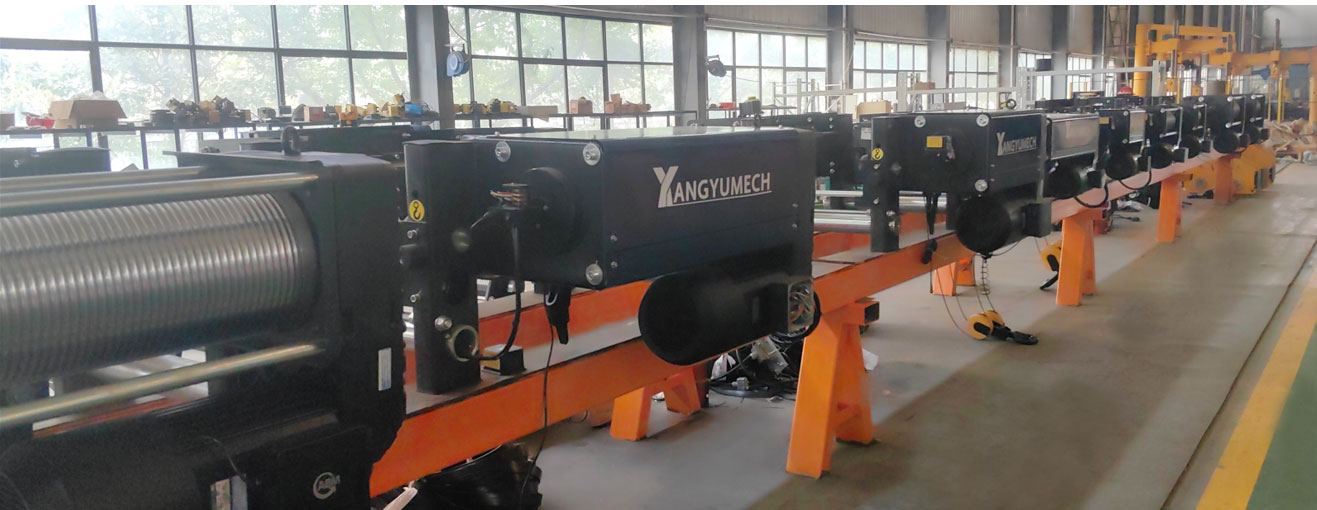1.Simple Structure:
Hoist cranes typically consist of one or more hoists (lifting devices) and a supporting structure (such as a bracket or hook).
2.Easy to Operate:
Hoist cranes are designed to be simple and user-friendly, suitable for non-professionals to use.
3.Flexible Movement:
Many hoist cranes are equipped with wheels, making them easy to move between different locations.
4.Moderate Load Capacity:
Depending on the design and materials, the load capacity of hoist cranes ranges from a few kilograms to several hundred kilograms.
5.Safe and Reliable:
Hoist cranes usually come with safety devices, such as limit switches and emergency stop buttons, to ensure safe operation.
6.Easy Maintenance:
Maintenance of hoist cranes is relatively simple, mainly involving inspection and lubrication of chains, pulleys, and gears.
7.Versatility:
Hoist cranes can be used for lifting, lowering, and horizontally moving heavy objects, adapting to various work requirements.

1.By Drive Type:
Manual Hoists: Lifting is done by manually operating chains or levers.
Electric Hoists: Driven by electric motors, suitable for frequent use due to faster lifting speeds.
2.By Installation Type:
Fixed Hoists: Installed in a fixed location, such as the ceiling of a workshop or warehouse.
Portable Hoists: Installed on a mobile stand, allowing for use in different locations.
3.By Lifting Speed:
Single-Speed Hoists: Have a fixed lifting speed, suitable for general work.
Dual-Speed Hoists: Feature two lifting speeds, suitable for tasks that require quick lifting and precise positioning.
4.By Load Capacity:
Hoist cranes can be categorized into light, medium, and heavy duty based on their load-bearing capacity.
5.By Usage Environment:
Indoor Hoists: Designed for indoor environments, suitable for general industrial and commercial use.
Outdoor Hoists: Designed for outdoor environments, with better weather resistance and protection levels.
6.By Application:
Industrial Hoists: Used in factories, workshops, and other industrial settings for material handling.
Construction Hoists: Used on construction sites for moving building materials.
Domestic Hoists: Used for home renovations and daily heavy object handling.
7.By Control Method:
Wired Control Hoists: Operated through a wired remote control.
Wireless Control Hoists: Operated through a wireless remote control, offering greater freedom of operation.
Hoist cranes are indispensable lifting tools in many situations due to their flexibility and versatility.